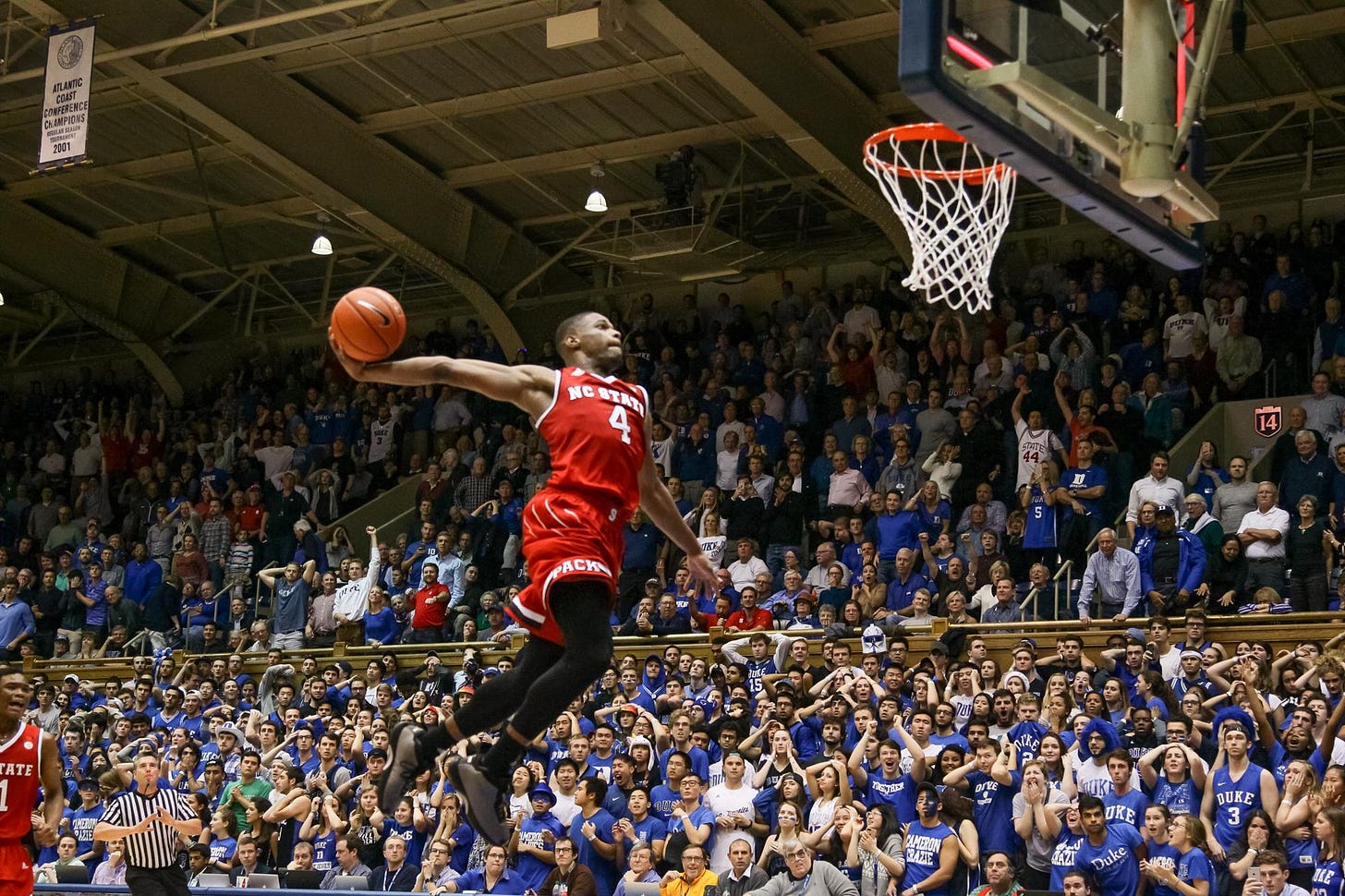Retro Scouting Report: Dennis Smith Jr.
We revisit the athletic point guard who didn't live up to the hype in the NBA
“After the ship has sunk, everyone knows how she might have been saved.”
Everything is easier with hindsight. Sometimes we all look back and think to ourselves “what the hell was I doing?”
Today is one of those days.
Dennis Smith Jr., a lottery pick ahead of the 2017 NBA Draft and strong one-and-done candidate at NC State, hasn’t turned into a quality NBA player deserving of a large role. We projected him as the fifth-best prospect on our 2017 NBA Draft Big Board, a certain misstep. It’s easy to stay that in retrospect and feel validated since history has already been written.
Instead, re-visiting the film was an exceptionally important exercise for us because it helped us realize that we’ve grown. My scouting ability has gotten better. What is frustrating when looking back at Smith, at least from a scouting perspective, is that many of the bugaboos I have now (shot selection, ball dominance, tunnel vision) were bugaboos then, and for some reason they were overlooked. Giving Smith a top-five grade feels unnatural because, in 2017, I said “the natural tools are worth betting on to overcome my own list of non-negotiables.”
Here’s the thing: when going back and watching the film in great detail, Smith really didn’t have that many natural tools. He wasn’t that athletic. He had a few posterizing moments and vicious dunks, but those can be counted on one hand. He was a bursty finisher in traffic and had a solid change of pace, but the shot selection and over-dribbling issues would prevent that from shining through. This is one where we should have been better.
One area I pride myself on is my ability to evaluate lead guards. Over the years, we haven’t missed too much. We’ve been lower on guys who turn into great offensive threats (LaMelo Ball, Devonte’ Graham come to mind). Rarely have we been too high on someone and they don’t turn into a solid point guard.
After revisiting Smith’s film, we asked ourselves two questions:
Why are we effectively cautious when it comes to evaluating lead guards?
What about DSJ was different and caused us to fail?
For the first question, I believe we do a good job of balancing natural vs. learned traits. It’s easy to fall in love with a lead guard who is advanced ahead of his time in college, who is great with pace and command, plays through Snake actions in the PNR and makes every corner kick. For all the appeal those guys have, there’s only so much bloom left on the rose and so much that an NBA team can teach them.
Identifying talent is also about valuing natural traits, not just seeing those who are already good players. NBA coaches have mind-boggling amounts of experience and insights; they can teach Snaking the PNR, making corner kicks and how to attack Drop coverage. To me, there’s been a gross over-valuating of feel, particularly on Draft Twitter.
Still, there are pre-requisites and thresholds that need to be met. For example: corner kicks out of the Spread pick-and-roll and reading the low man. Not over-dribbling and having controlled ball handling. Finishing with touch around the rim. For a guy to be a lottery pick, unless he’s supremely big or the most athletic player imaginable, those need to be present.
That’s where we failed with Smith. He showed the traits that should have prevented him from rising up our board to the heights he did (that entire ‘decision-making’ segment in the video is a major indictment on us for what we missed). Instead, the perception around his athleticism and natural tools (not necessarily the tools themselves) won out.
There were also aspects that Smith showed that didn’t pan out. His shot-making was worse in the NBA than in college; I don’t think it was unfair to buy into his upside. His transition scoring should’ve made him pop within the right system to a certain extent. His passing wasn’t poor when he got to it. To say Smith should’ve been a late-first or early-second guy is probably over-adjusting.
We’ve also learned more about the position as the game has changed to accurately assess critical skills. For example, the more teams adopt Drop coverage, the more important a floater becomes. That’s an area Smith really struggled at NC State: deceleration and an extended layup counter. As we’ve become better scouts of the position, we’ve added that into our requirements for elite draft grades.


